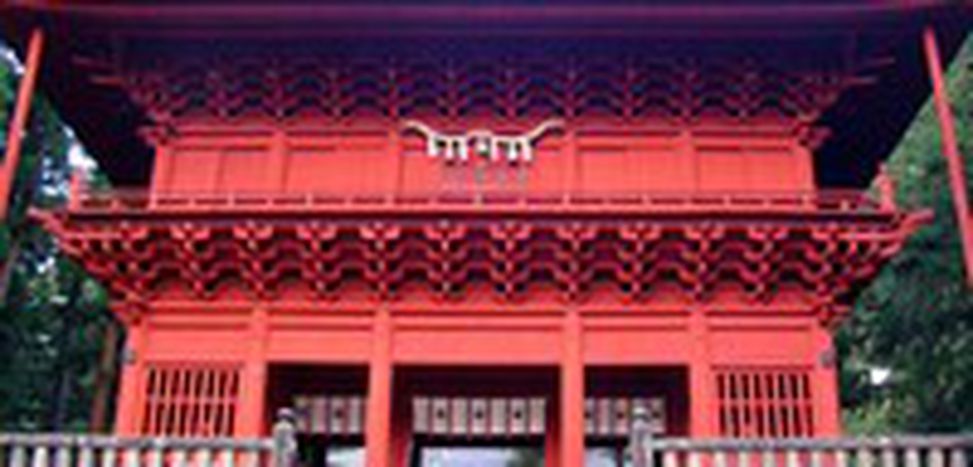
The other Japan
Published on
Two years ago the restive Huck Finn in me awoke. I picked up a bag and set off to explore. I left an inward-looking Europe, having fallen out of love with the disenchanted complacency of the continent
Normal break-ups are difficult, imagine the trouble caused when you end a relationship with your continent. To avoid a tectonic disaster, I took the moral higher ground and moved out.
Moving in all senses of the word defines me: moving out, moving up moving on. I’m of that generation that feels at home crossing borders, my heart beats to the rhythm of jostling carriages, finds comfort in incomprehension. I left Europe wanting to find foreignness rather than any specific culture; difference and movement being the order of the day.
I turned to the East. I went as far as I could, stopping at that point just before the Far East becomes the Wild West. I stopped in Japan.
Japan, land of the rising cliché: sushi, sumo and geisha, three small parts of the multifaceted mosaic of Japanese culture but which in Western perception form an overbearingly unholy trinity that overshadows the rich and unique culture they are thought to typify. I avoided the oversimplification of the tourist trap and headed for the inaka, the countryside.
Six hours by bullet train and about fifty years from the flashing neon signs and cosmopolitan attitudes of downtown Tokyo there is a mountain; a dormant volcano that stands out from the rural flatness of the surrounding Tsugaru plain. After sunset its three-peaked cragginess looks less like a geographic feature and more like a tear in the sky, a darkness deeper than the surrounding night.
Yet, there is one area where the darkness is not total. At the base of the mountain and yawning back two hundred metres lies a magical lantern-lit place, Iwakijinja, a Shinto shrine. Shinto, Japan’s indigenous religion, finds its roots in the time where myth, superstition and religious belief told each other stories. Almost animist, it believes that kam or spirits live shoulder to shoulder with the already crowded residents of Japan’s myriad islands.
Nature is central to Shinto, there are kami in rocks, trees, mountains. As such Iwakijinja is woven into the landscape: red wooden buildings dotted amongst trees, huge stone steps worn from centuries of devotion cascade past small rivers and ponds, moss covered statues seek shelter under trees with prayers tied to them. Whereas Notre Dame is the ultimate triumph over nature, majesty completely made by the hands of man, Iwakijinja is the epitome of fusion with the natural, and all the more otherworldly for that. It commands the reverence of a cathedral without the judgemental silence.
The entrance to the shrine is marked with torii, simple gateways fashioned from four pieces of weathered red-painted wood. Once you walk under a torii you have entered the terrain of the kami. When I pass through the torii into Iwakijinga, I feel a palpable change. No longer am I in modern Japan, the automated, Americanised, overworked, modern Japan. I am entering a place where Japan remembers what it really is: an island nation, rich in mythic tradition, set apart, still enthralled by its own mysteries..
At present, the heady nights of summer see Iwakijinja at its most enthralling. As the half-light of sunset fades the normally silent paths of the shrine come alive with the shuffle and slide of dancing feet, the chants of a people exultant, the pounding of drums and the flickering of candles. Early August is festival season and when night falls there is a shimmer of magic in the balmy air.
Candle-lit lanterns cast a warm waxy glow on the throngs of people who come to celebrate the founding of the shrine and the kami it is dedicated to. The ever-bustling stalls laden with delicious kebabs, deep-fried squid, cold beers and minor indiscretions help turn the atmosphere from that of a procession to that of a festival. Distant drumbeats can be heard.
I buy some yakisoba, fried noodles off an old woman. Seventy years of accumulated insularity and almost as long farming rice have bowed her legs and bent her back. But her sense of humour has not been stunted, for although I don’t understand it we seem to be sharing in a hilarious joke.
Suddenly we’re silent. A booming drumbeat reverberates through the air, resonating with the crowd. The dancers have arrived. I turn. Below the entrance to the shrine, a mass of humanity dances. Old and young, the twilight generation swaying alongside the generation ascendant, locked in a waltzing embrace, dancing with well-worn shoes to the music of their common soul.
Seeing the spectacle around me, I know Iwakijinja’s festival is the foreignness I sought to find. It is a foreignness that is encompassing and inviting, moving and utterly enchanting. My inner Huck Finn is silenced and satisfied like one who has come to the end of a long adventure. After two years of movement I feel ready to move on, to move home.



